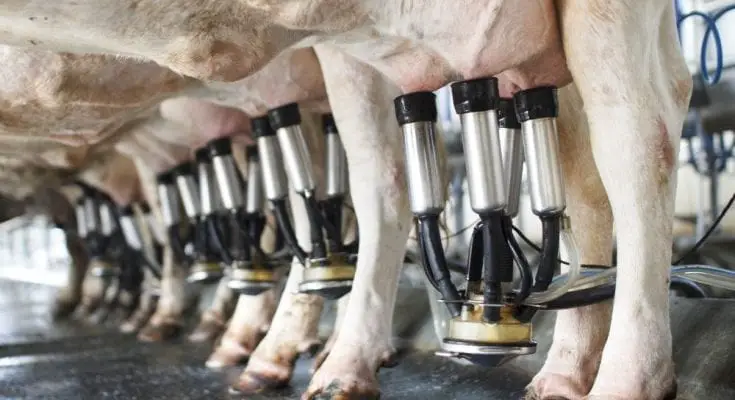It supplements our cereal, accompanies our cookies, and buffs up our baking. Milk is such an essential part of our everyday life, but we don’t usually think about it the journey it took to get to our breakfast table. The smiling faces of cartoon cows standing in front of doodled dairy farms give us a clue, but they don’t present the whole story of how milk gets from the cow to the store.
Down on the Farm
Mama Cows
When you live in the city or the suburbs, it’s easy to forget milk’s primary purpose isn’t to drown your Captain Crunch. It’s to feed babies. The journey of milk from the cow to the store begins with a baby cow. Farmers breed milk cows with a farm bull. Several days after giving birth, she produces far more milk than the calf needs and gets milked multiple times.
Milking Cows
When we think of dairy farms, our minds tend to picture an idyllic image of a maid in prairie dress, sitting on a three-legged stool milking a cow by hand. But the average U.S. dairy farm contains thousands of cows, so this isn’t exactly a viable option.
Modern farms use automated milking machines. These machines clean and sanitize the udders and then attach to the teats, simulating the feeling of a calf’s mouth. These “milking parlors” can often milk as many as 100 cows an hour. After they collect the 101-degree raw milk, they put it into a tank that cools it to 39 degrees until it’s sent to the dairy plant.
Off To the Dairy
Pasteurization
You don’t have to be a culinary whiz to know heat kills off bacteria. It’s one of the reasons why we cook our food. Even though we drink milk cold, dairy plants heat raw milk to 161 degrees to kill off bacteria. This process is called pasteurization. After the process finishes, the pasteurized milk is cooled back to 39 degrees again.
Homogenization
At this stage, a person could drink the milk without any problems. However, if you left it to sit long enough, the cream would separate from the rest of the milk, rising to the top. To keep this from happening, dairy plants put milk through a process called homogenization. This process involves blending the milk with a high-pressured atomizer to disperse the milk evenly.
Shipping
Because milk can go bad in the wrong conditions, there are very specific guidelines for its storage once it’s done processing. It can only be stored for a brief amount of time before it’s shipped to maximize its shelf life in stores. Dairy shipping vehicles must be refrigerated, hygienic, and able to transport the goods to the stores in a timely manner.
FAQ
How is milk made?
Modern farms use automated milking machines. These machines clean and sanitize the udders and then attach to the teats, simulating the feeling of a calf’s mouth. These “milking parlors” can often milk as many as 100 cows an hour. After they collect the 101-degree raw milk, they put it into a tank that cools it to 39 degrees until it’s sent to the dairy plant.
Additional Resources:
Protein
Water
H
igh Fructose Corn SyrupMoon Bears
Dogs
C
ats 8x90/300x250 -->


